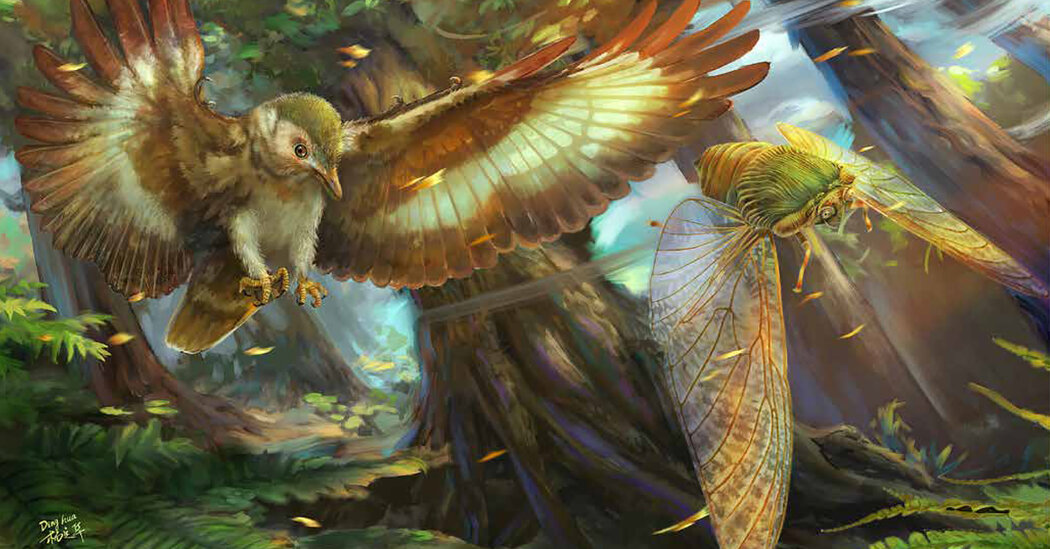Fossils reveal that prehistoric cicadas’ wings evolved to help them evade hungry predators with feathers and beaks, scientists say.
Today, few critters are as abundant as cicadas. Thousands of different cicada species are found throughout the world, and some even periodically emerge by the trillions.
But the prehistoric world was not crawling with periodical swarms. The cicadas of the late Jurassic Period — which had bulkier bodies than today’s bugs and wingspans that eclipsed those of modern hummingbirds — were relatively scarce. And they were under attack from a new predator with feathery wings, claws and a toothy beak.
Early birds posed a fearsome threat. But as they responded to these competitors, cicadas evolved sleeker and more powerful wings, according to a paper published on Friday in the journal Science Advances.
Chunpeng Xu, a scientist at the Nanjing Institute of Geology and Palaeontology in China and the lead author of the new study, and his colleagues describe this evolutionary bout between predator and prey as an “air race,” and they posit that the conflict eventually improved ancient cicada diversity.
“The rise of early birds influenced the aerial ecosystem during the late Mesozoic, especially the evolution of flying insects,” he said.
Dr. Xu’s team analyzed ancient cicadas belonging to the group palaeontinidae. These insects, which resembled moths with shrunken heads, originated during the middle Triassic Period and persisted for around 160 million years into the Cretaceous Period. Like contemporary cicadas, the beefier palaeontinidae cicadas lived in trees and slurped up plant fluid.
